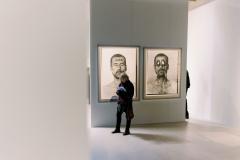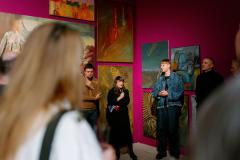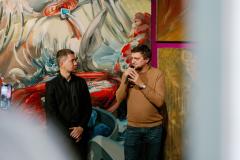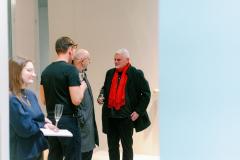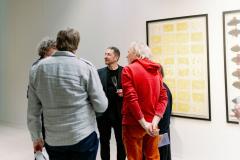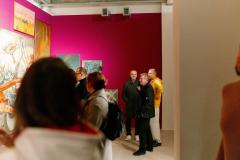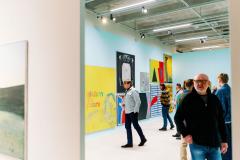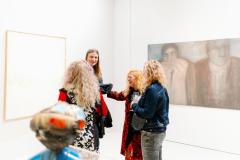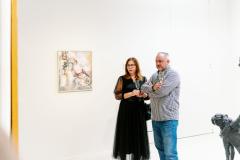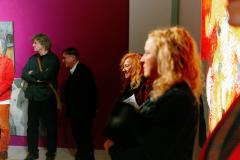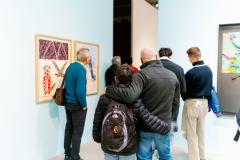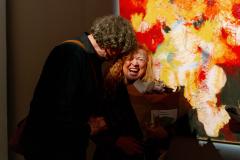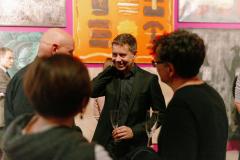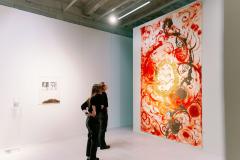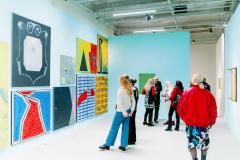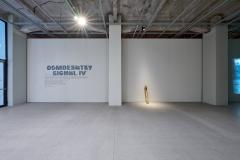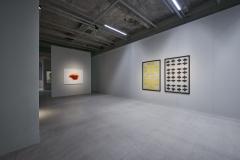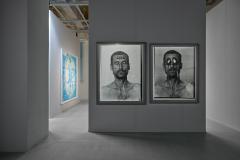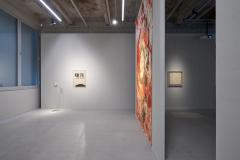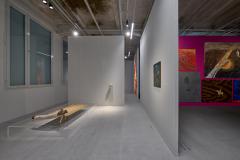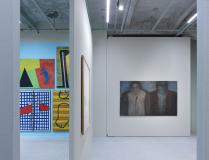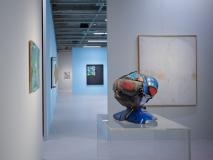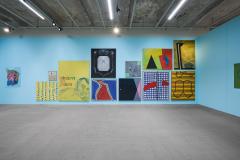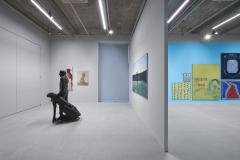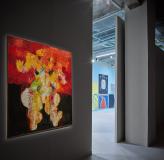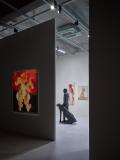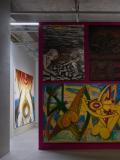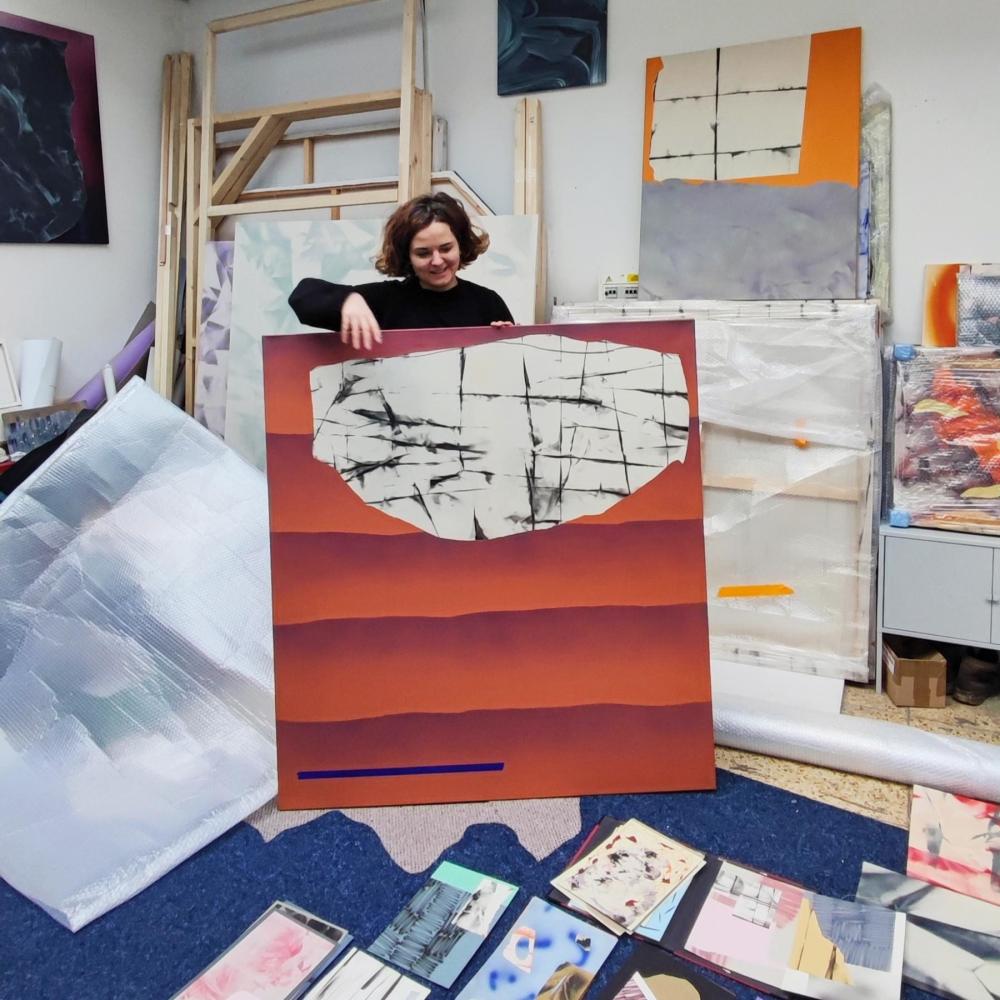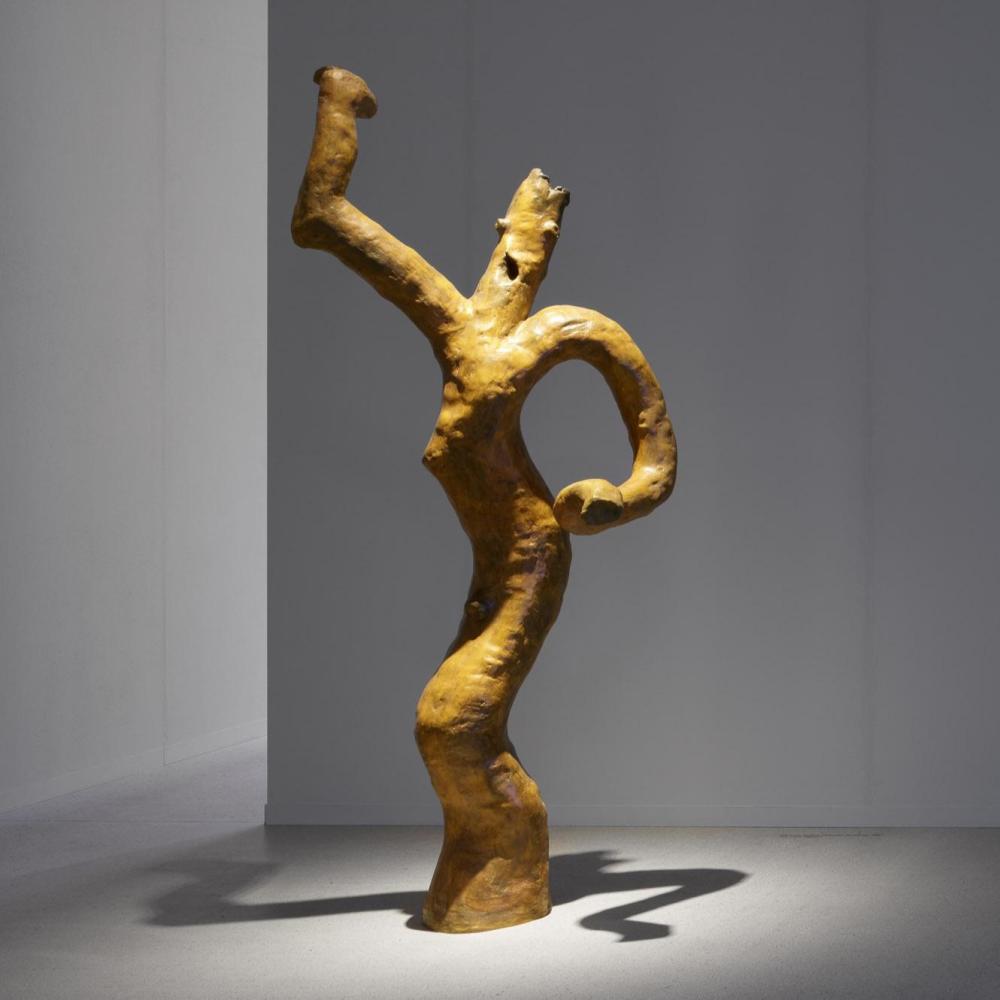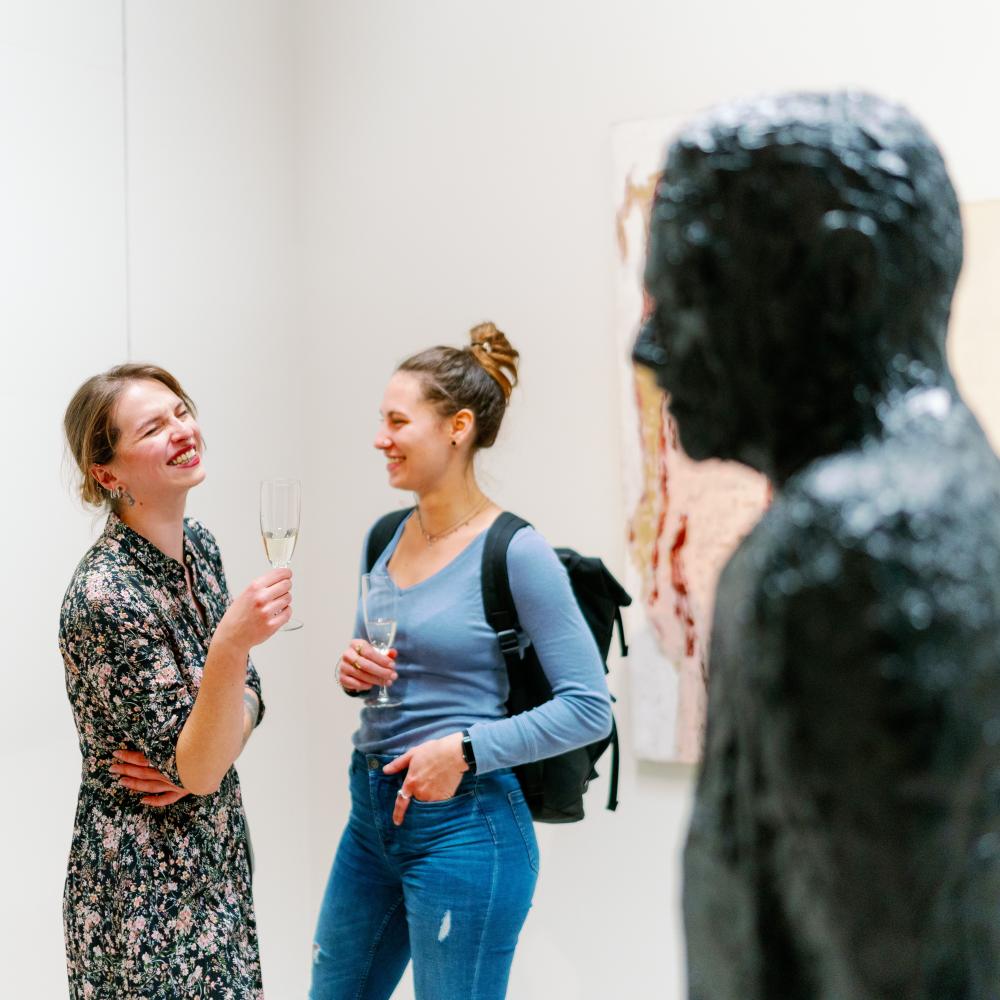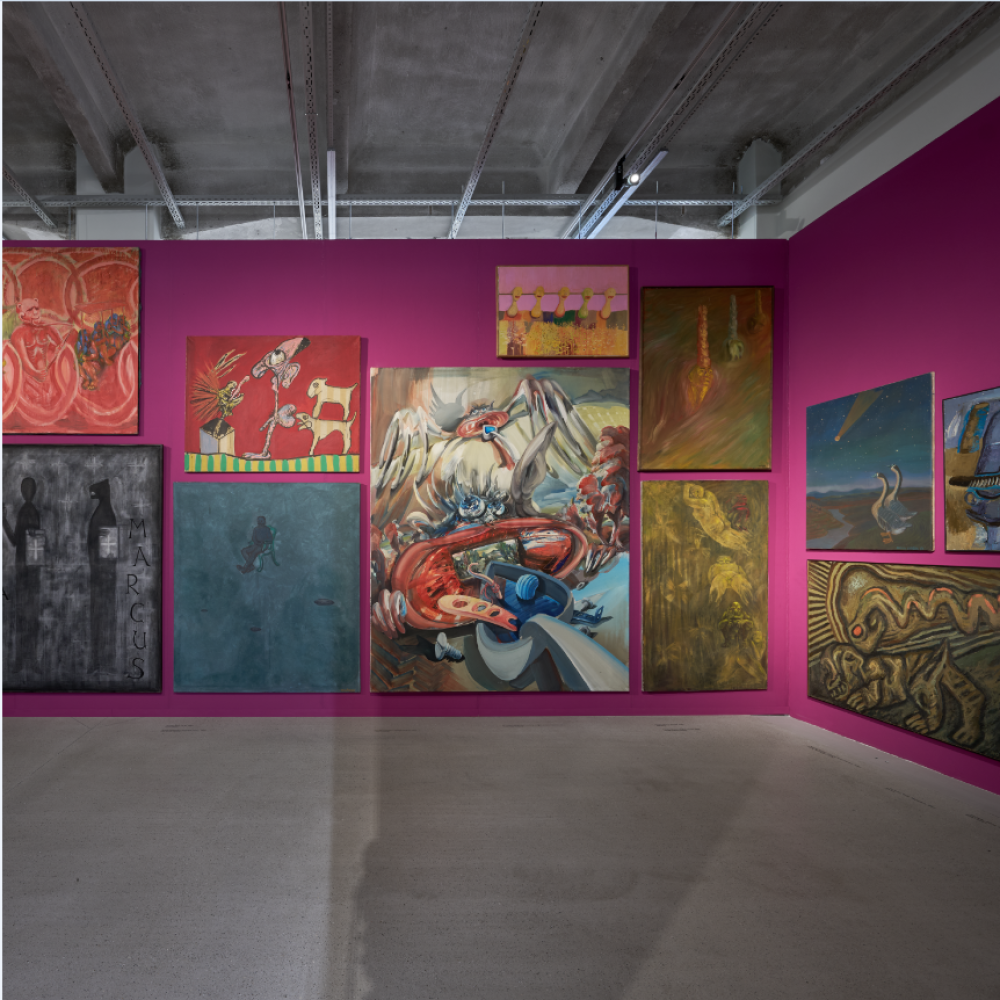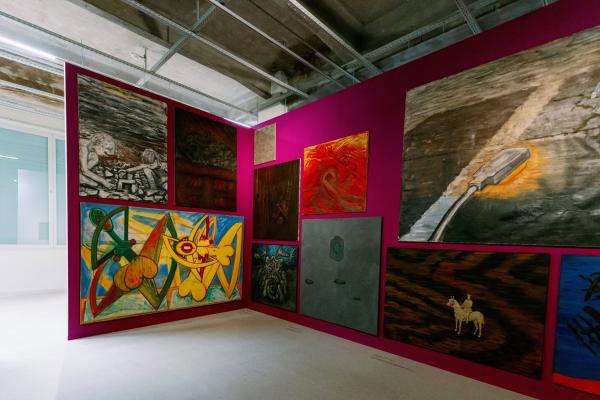
Jiří Načeradský (1939-2014) was one of the most significant Czech painters of the second half of the 20th century and a leading figure of the new figuration in the 1960s. His work oscillated between the grotesque, figuration and geometric stylization. Painting as a form of visual experimentation is associated with a playful exploration of the human figure, imagery and body movements. He drew inspiration from everyday reality, art history, but also from comic book aesthetics and mass culture. His style has changed over the decades, but has always retained a playfulness and a certain amount of irony. In 1967, he made a significant impact at an exhibition at the Mánes in Prague with a series of paintings depicting naked runners. In the following years he experimented with various forms, from stylised machines and figures inspired by comic books and deformed female bodies to geometric landscapes.
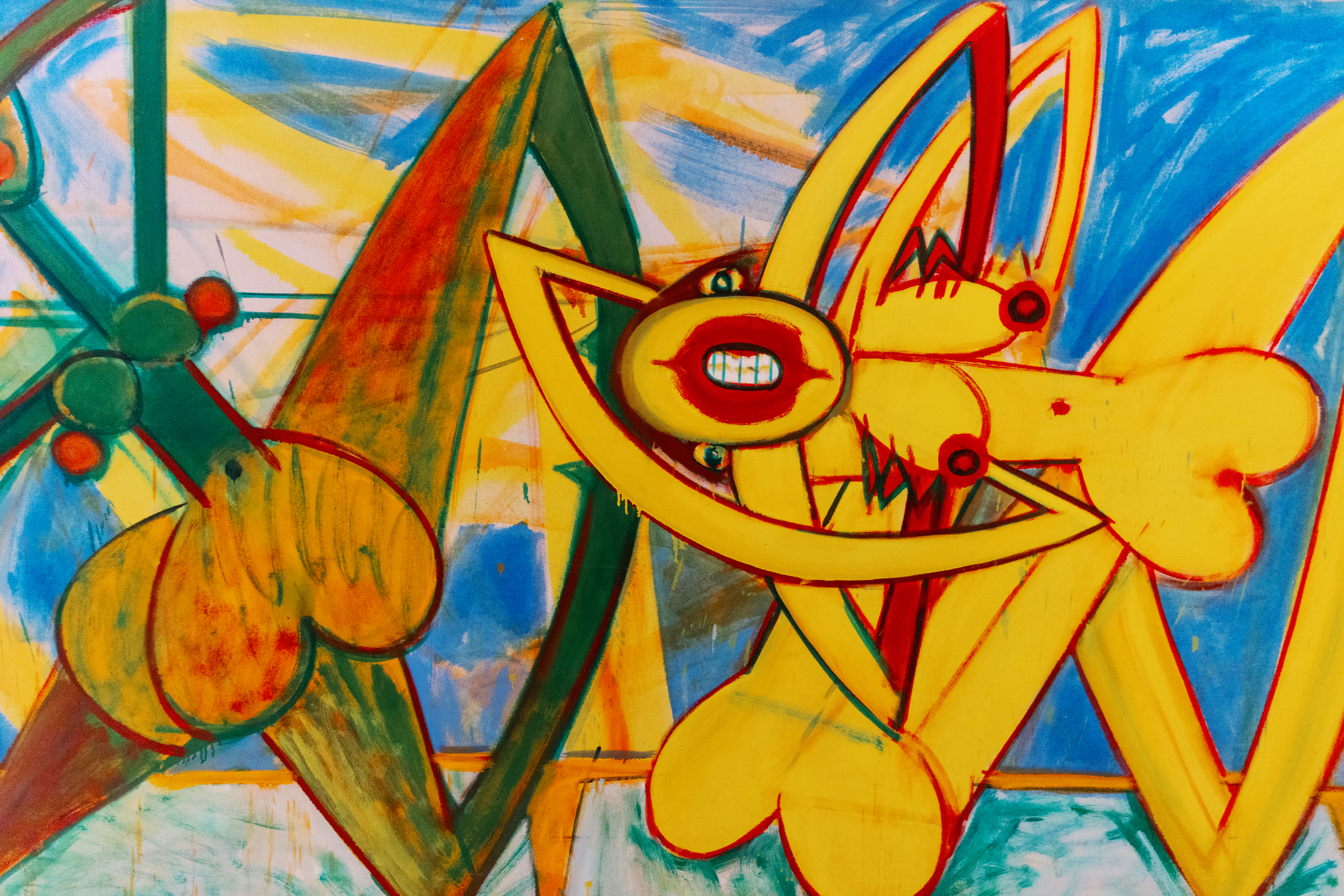
The 1989 work Tamtam reflects Načeradský's distinctive language and his penchant for grotesque and sexual exaggeration, where the human body becomes mechanized, deconstructed into abstract shapes and arch constructions. The yellow figure, whose enlarged lips suggest a playful relationship with expressivity, is part of a kind of fantasy mechanism where organic and geometric shapes merge into one visual symbiosis. Here, Načeradský deconstructs the human figure and transforms it into an ironic hybrid between machine and living organism. The colour palette consisting of dominant shades of yellow, green and blue underlines the dynamics of the composition and enhances the contrast between the formally precise frame of the painting and its flowing internal structure. The painting is full of energy, which translates into a tension between the free brushstrokes and the stricter lines of the geometric architecture. This combination reflects Načeradský's fascination with movement and his ability to create the illusion of mechanical rhythm.
Načeradský's focus throughout his artistic career was on the interpretation of the human figure, although he often distorted and abstracted it to the point of grotesque stylization. He often worked with motifs of the human body in the context of sexuality, irony and absurdity. Throughout his life, he was fascinated by the dynamics of the relationship between man and woman, which he reflected through motifs of attraction, conflict and intrigue. His works are not only a reflection of the social atmosphere of the time, but also a deeply introspective statement on the meaning of human existence.
The work Tamtam is a testament to his exceptional ability to combine playfulness with a serious commentary on the nature of human existence, transforming the figure into an absurdist art game that surprises and tantalizes the viewer with its ambiguity. The painting can be placed in the context of his lifelong interest in interpersonal relationships, the deformation of the figure and their constant search for new forms of representation of the body and movement.
